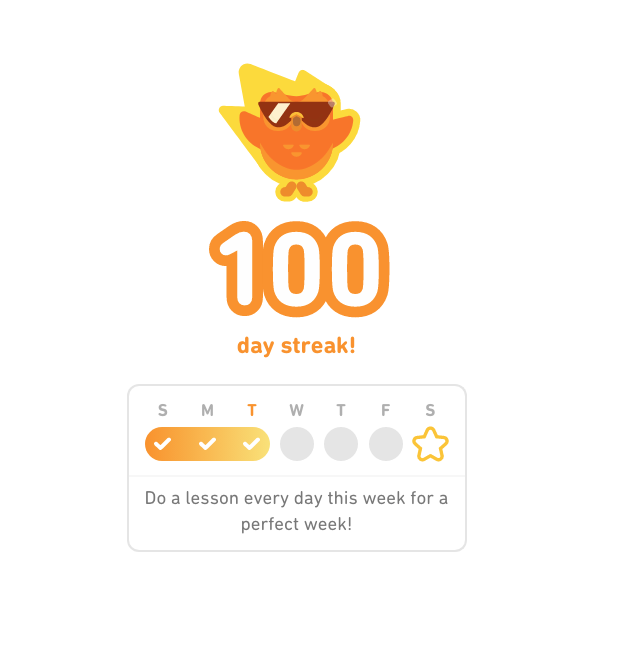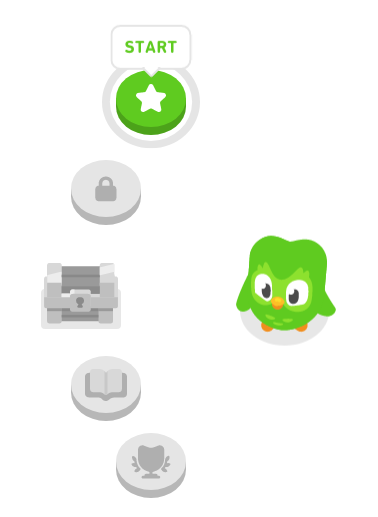Duolingo is a fantastic resource to integrate language learning into a home-ed curriculum. It’s free (although the subscription upgrade offers some useful extra features), works as an independent learning platform or as a classroom, and is a fun and encouraging language learning programme.
Using Duolingo for Home-Ed
Sign up as a teacher via the ‘Schools’ link, and create classrooms:

Set a language for the classroom. There are over 40 languages to choose from!
Once you’ve set up the classroom and sent students a classroom link, lessons can be assigned and challenges set. You can choose to assign the already curated lessons DuoLingo generates for each unit,

or you can use the Unit Guidebooks as a textbook. There are great tips in the guidebooks that can be used to help students work their way through language learning worksheets independently,


and used as a reference while speaking during the DuoLingo practice to improve pronunciation.
From the classroom link, students see which lessons have been assigned to them, the date the assignment is due and the number of XP points it will earn them.
(XP points are shown on a leaderboard learners can aim to top.)
DuoLingo is a great addition to a language curriculum for home education because it allows home educators to track their students progress & identify learning gaps. The DuoLingo language learning system generates free language learning resources that can be used by home educators to create lessons that require no ‘teacher-input’ and very little prep.
Getting Started with Duolingo
To use Duolingo, homeschoolers must create an individual account. The app asks the purpose of learning the language and tailors the language content accordingly.

Users must set a learning goal re. the frequency of study.

This is another bonus tool for home educators because it allows you (as a teacher) to specify how long each pupil must spend studying the language each day, and to talk (as a parent-teacher) about the importance of consistency in language learning and how to create a learning plan that allows them to achieve their learning goals.
After creating a profile, users are given a language placement/ level test that assess the learner’s present language knowledge.

Using this test (which can be repeated and the levelling adjusted accordingly at any time; useful if DuoLingo is being used in conjunction with another language programme*), DuoLingo assigns the correct course unit for learners to start with.
And so begins their language journey!
Young language learners will love the graphics, revel in getting bonus XP points – anything that involves gaining points for effort not just achievement is welcome.
For families home-educating siblings, the XPs are a fun way to add an element of healthy competition between homeschooled sibling-classmates. DuoLingo offers learners Xp boosts if they team up to complete a specific goal together (eg. challenging each other to score 90% across a number of lessons). This feature is brilliant for homeschooled siblings – healthy competition is a good thing! (ps. this works even if siblings – or Duolingo friends – are learning different languages.)
DuoLingo works really well as a booster course alongside textbook language learning, as a laid-back ‘more fun than flashcards’ revision tool and is a good way to help homeschoolers see the progress they’re making in alternate language lessons.


If your homeschool’s core language curriculum is textbook-based, learners can access DuoLingo classes in the textbook’s order of grammar and vocabulary by jumping ahead or skipping back.
Being able to skip forward on the learning path helps explain to homeschoolers the benefits of including different mediums when learning a language. True fluency comes from a level of proficiency that can only be achieved (for most people) with a language learning programme that combines reading and speaking; writing and listening.
In our homeschool, language ‘lessons’ allocate time to longer writing activities and active listening, while daily Duolingo boosts reading and pronunciation. The more they commit to writing and listening, the easier reading and speaking, hence, the more they apply themselves in class, the further along on DuoLingo they’ll be (and vice versa).
One function of Duolingo we haven’t yet explored is the discussion forum.
When you answer a question correctly there is a link to discuss the question that looks like an option that would be great for independent language learners. We plan to explore this function of Duolingo once our homeschoolers reach intermediate level of fluency (so they understand enough to communicate comfortably and appropriately) and are old enough to be left unsupervised on forums. (Commonsense Media rates the website as 13+)
Bonus Home-Ed Lessons using Duolingo
DuoLingo languages include less commonly known languages like Esperanto. Learning about a language can easily be classed as ‘school’ :
- Research the language (eg. by reading aloud this Britannica text )

- …explain what an artificial language is.
- Make a pop-quiz to check what information they’ve retained from reading the text. (Canva is an easy app to use to make quizzes.)
- Set a writing exercise to explain the history of the language/ any unusual quirks of the language/ the countries where the language is used.
Looking at obscure/made-up languages is always fun and makes great lesson material if your homeschoolers enjoy reading or watching The Lord of the Rings, Dr Who, Star Wars etc. Use a lesson plan similar to the one above, watch The Big Bang Theory (in age-appropriate snippets) to show how much fun can be had speaking Klingon (Boggle), and spend a lesson using DuoLingo to learn basic phrases in a random language that intrigues your homeschooler.
If you’re flexible in how homeschoolers learn what they need to learn, and if they’re encouraged to learn whatever it is that intrigues them, lessons start to write themselves.
N.B. We’ve signed up to Super Duolingo and find it’s worth the cost – for the ability to use Duolingo offline and especially for the personalised lessons reviewing mistakes.


